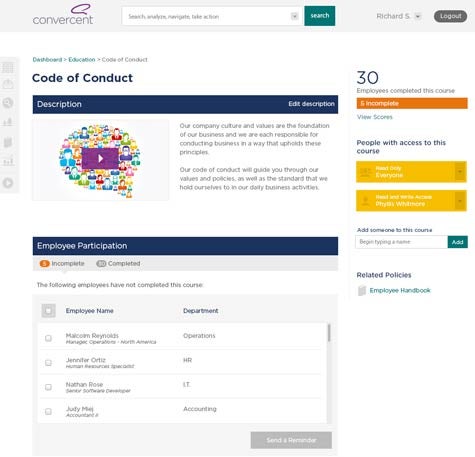Like most things associated with managing IT these days, setting up the infrastructure required to support a particular application seems like a waste of resources when that application is readily available in the cloud.
The latest example of this trend comes from Convercent, which has launched a namesake compliance management application in the cloud. According to Convercent CEO Patrick Quinlan, what differentiates Convercent’s software-as-a-service (SaaS) application from other compliance management platforms is that it includes the collaboration tools required to not only enforce compliance, but also remind employees about the compliance policies associated with any specific action.
Quinlan says most employees are inclined to comply with corporate policies when they are aware they exist. Convercent not only includes collaboration tools and support for a range of mobile computing devices, it also allows IT organizations to identify instances of when employees stayed within a corporate guideline. That ability to identify those instances makes it then possible to reinforce that behavior by being able to cite specific examples of where employees complied with the company’s code of conduct.
Convercent, which also just picked up another $10.2 million in funding, is part of a broader trend to push compliance management into the cloud, mainly because the cost of deploying on-premise IT infrastructure to support compliance applications that often don’t have an easily quantifiable return on investment (ROI) can be problematic.
Of course, more cynical minds might be inclined to dismiss an employee-centric approach to compliance. But it’s pretty clear that approaches to compliance that rely on negative reinforcement are not meeting with much success. So maybe the time has come to try something different. Arguably, those compliance processes are even pushing more people than ever to embrace so-called “Shadow IT” systems in the cloud.
Similarly, as a cloud application that companies pay to use by the month, the risk associated with being wrong about Convercent is relatively minimal.



